Girard-Perregaux 1966 Orion Trilogy
A contemporary size dress watch with a starry twist.
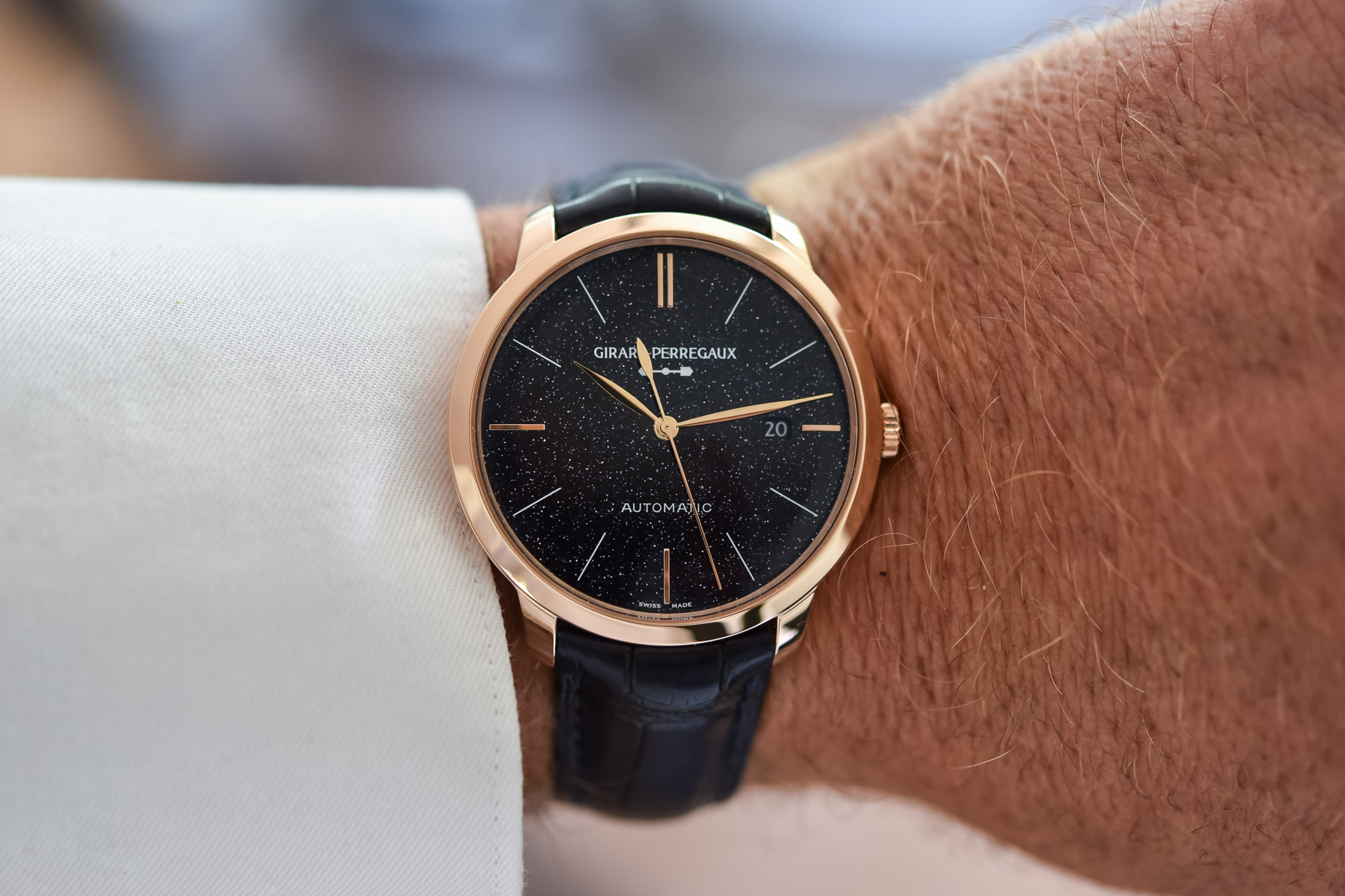
Perhaps not the best-known collection at Girard-Perregaux, eclipsed somewhat by the prominence given to its Laureato luxury sports watch family and its heritage Bridges collection, the 1966 is where you’ll find simple, elegant round dress watches with a touch of retro. The latest model to join the 1966 family is the Orion, a trilogy of slim, straightforward, automatic time-and-date models with sparkling aventurine dials. Introduced earlier in 2020, the 1966 Orion Trilogy is an attractive dress watch proposal with a discreet sparkle in rose gold, steel and DLC-coated black steel.
The 1966
GP presented its first high-frequency watch movement beating at 36,000 vibrations per hour in 1966 and went on to win many chronometry prizes from the Neuchâtel Observatory. To celebrate GP’s pioneering period in the field of chronometry and recapture the spirit of the high-frequency model (Chronometer HF Gyromatic), GP presented its 1966 collection in 2016. The 1966 collection is renowned for its round, ultra-thin cases, elegant leaf-shaped hands and tapered hour markers. With sizes ranging from 30mm to 44mm for both men and women, the 1966 line-up offers everything from simple time, time-and-date, date and small seconds and moon phases to full calendar and world timers.
Star-hunting Orion
The constellation of Orion, one of the most conspicuous constellations in the night sky with two of the ten brightest stars (supergiants blue Rigel and red Betelguese), gets its name from the Greek hunter Orion. The trilogy of Orion watches recreate the cosmic sparkle of Orion with their glittering glass aventurine dials. Aventurine glass, also known as goldstone, is coloured glass with an abundance of reflective inclusions. Produced since the 17th century in Murano, Venice, aventurine can be red, blue, black and even green. For the 1966 Orion Trilogy, the blue and black aventurine used on the dials had to be curved to acquire its domed shape, an extremely difficult procedure given the brittle nature of glass. As you can see, even the rectangular date window had to be expertly carved out of the fragile glass dial.
The metallic baton indices on the dial are applied at 12, 3, 6 and 9 o’clock while the rest are stamped in white on the dial. The stamped markers and longer and slimmer than the applied baton markers and create the finely balanced lines that characterise this model. The leaf-shaped hour and minute hands in material matching the case sweep over the star-studded dial along with the slim seconds hand and its leaf-shaped counterbalance.
Also worth noting is the presence of the ‘bridge logo’ under the brand name on the dial (referring to the famous La Esmeralda Tourbillon with Three Bridges model that won a gold medal at the Paris Universal Exhibition in 1889), the first time it is featured on a watch in the 1966 collection.
Three case materials
Like the three stars on Orion’s belt, the 1966 Orion Trilogy comes in three different case materials: steel with blue aventurine; steel with black DLC and black aventurine; and pink gold with blue aventurine. The diameter across all three models is 40mm, a contemporary interpretation of dress watch measurements. Luckily, the case has a height of just 9.40mm, slender enough to be considered a dress watch and slip elegantly under the cuff.
Although the words ‘sparkle’ and ‘glitter’ might send some of our readers running, the delicate scintillating speckled surface of aventurine glass is a far cry from hardcore sparklers like diamonds. It’s there, but it’s not there, especially so in the black DLC model with the black aventurine dial that emits a soft twinkling sparkle like the stars at night.
In-house Automatic movement
The movement powering the 1966 Orion is the trustworthy in-house automatic calibre GP03300-0139, which is revealed beneath the sapphire crystal on the caseback – in the case of the steel DLC model, the caseback is a smoky sapphire crystal colour. With a frequency of 28,800vph/4Hz, the 218-part movement offers a minimum 46-hour power reserve. The plates and bridges are bevelled, engraved, circular-grained and decorated with Côtes de Genève. The large oscillating weight comes in pink gold for the pink gold version while the two steel models have steel rotors.
Straps and price
Blue or black alligator leather straps with pin buckles in either pink gold, steel or steel DLC complete the package. The steel Orion with blue aventurine dial retails for CHF 8,700, the steel black DLC model with black aventurine dial for CHF 9,500 and the pink gold for CHF 17,900.
For more information, please visit girard-perregaux.com.

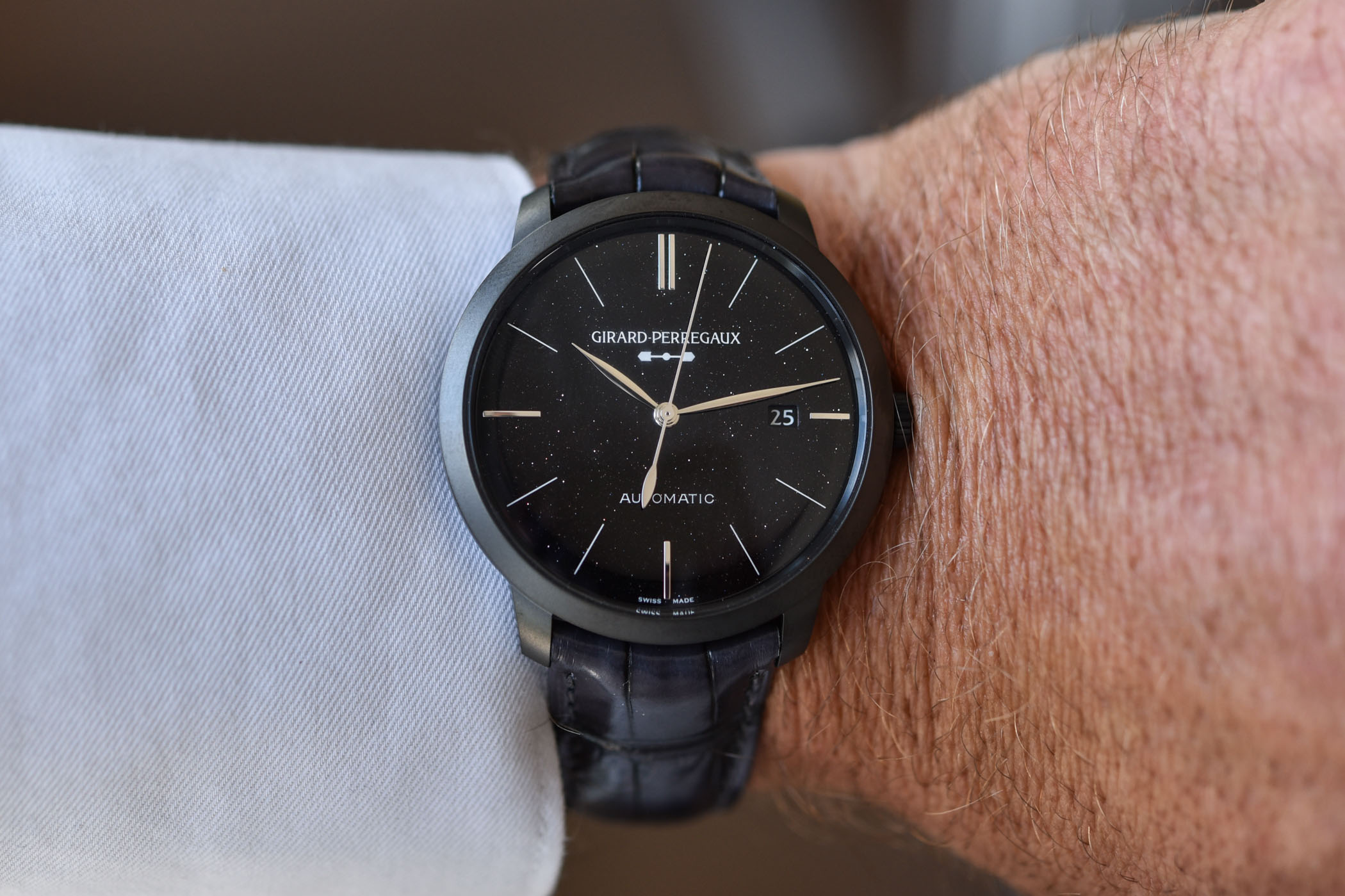
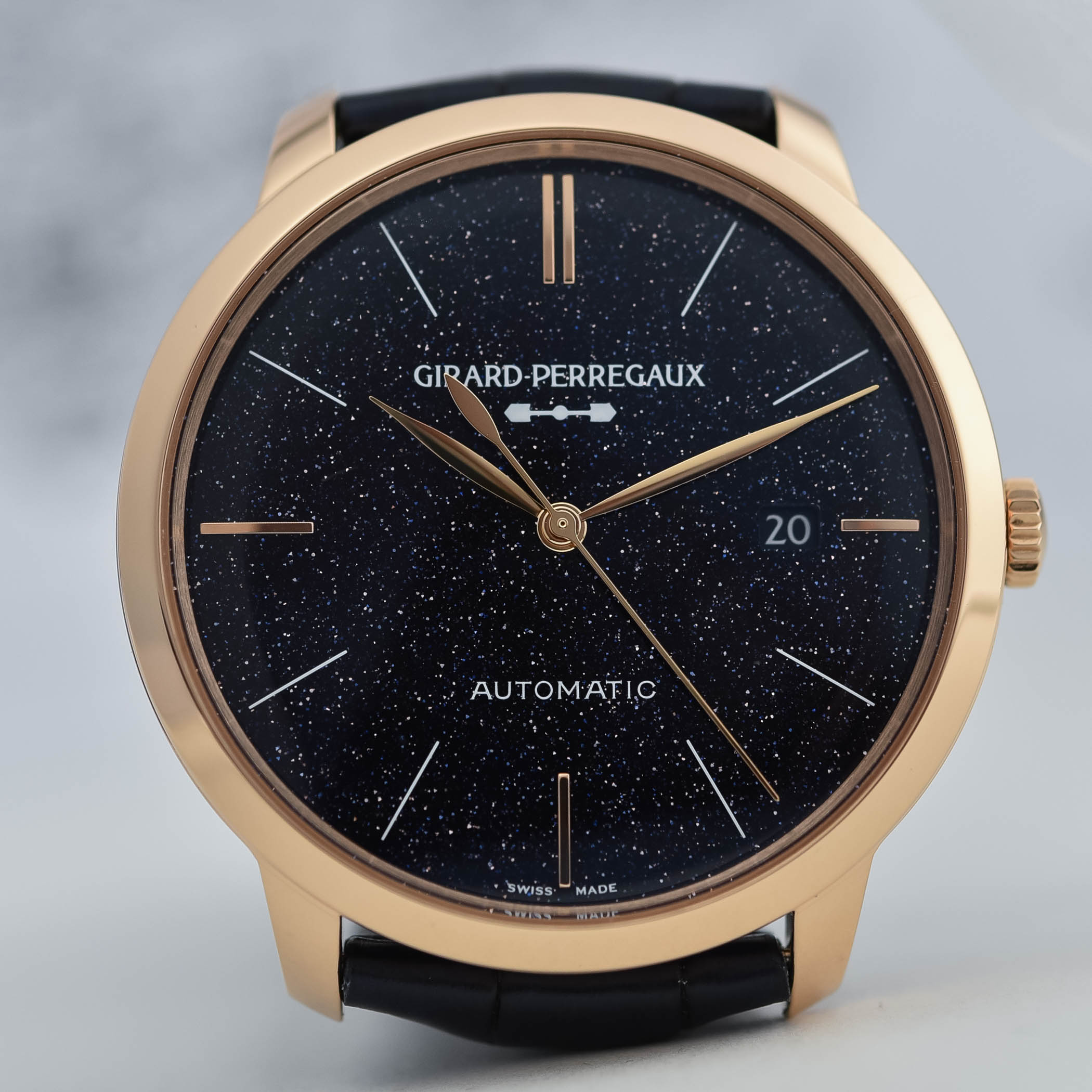


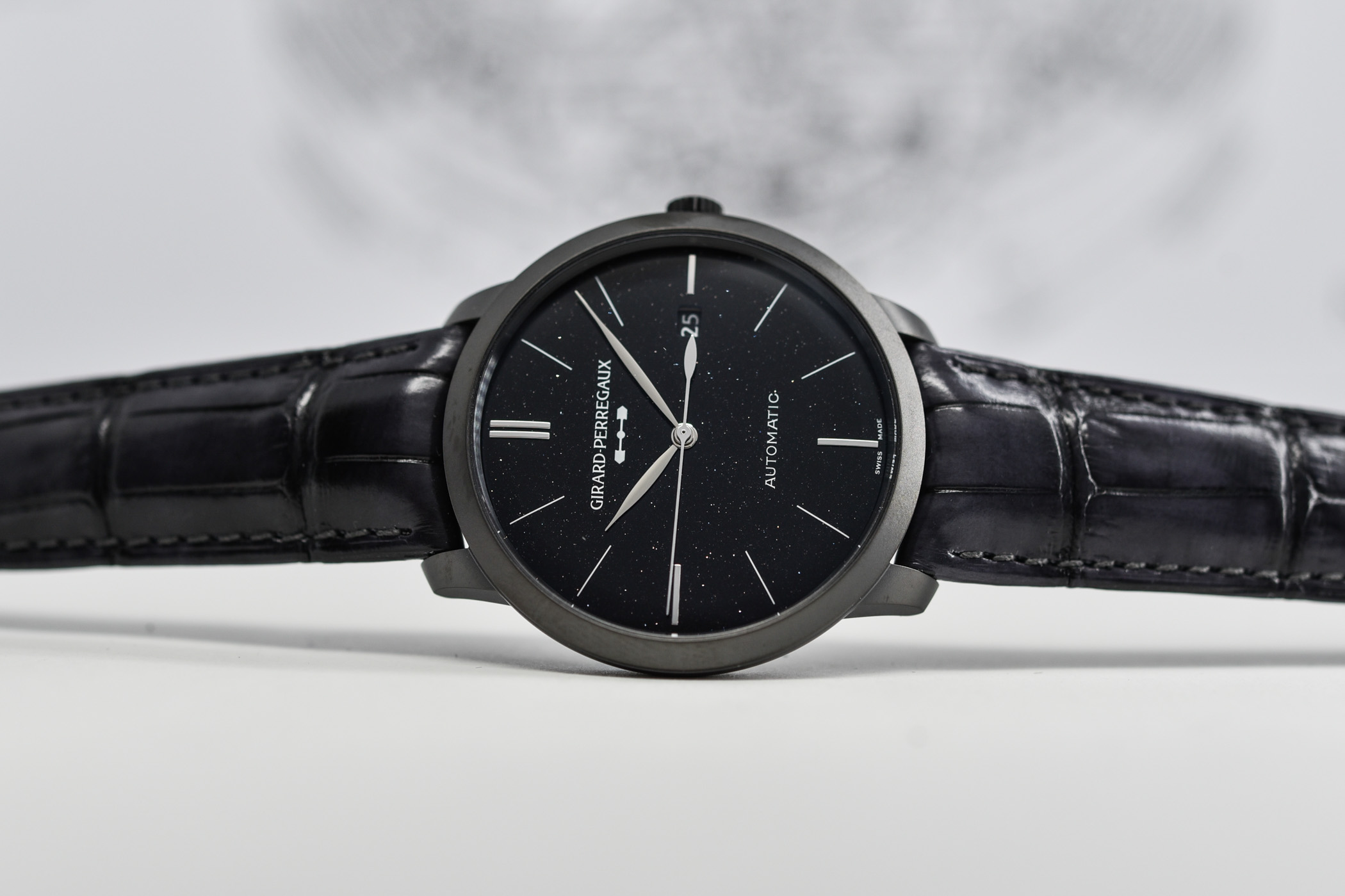
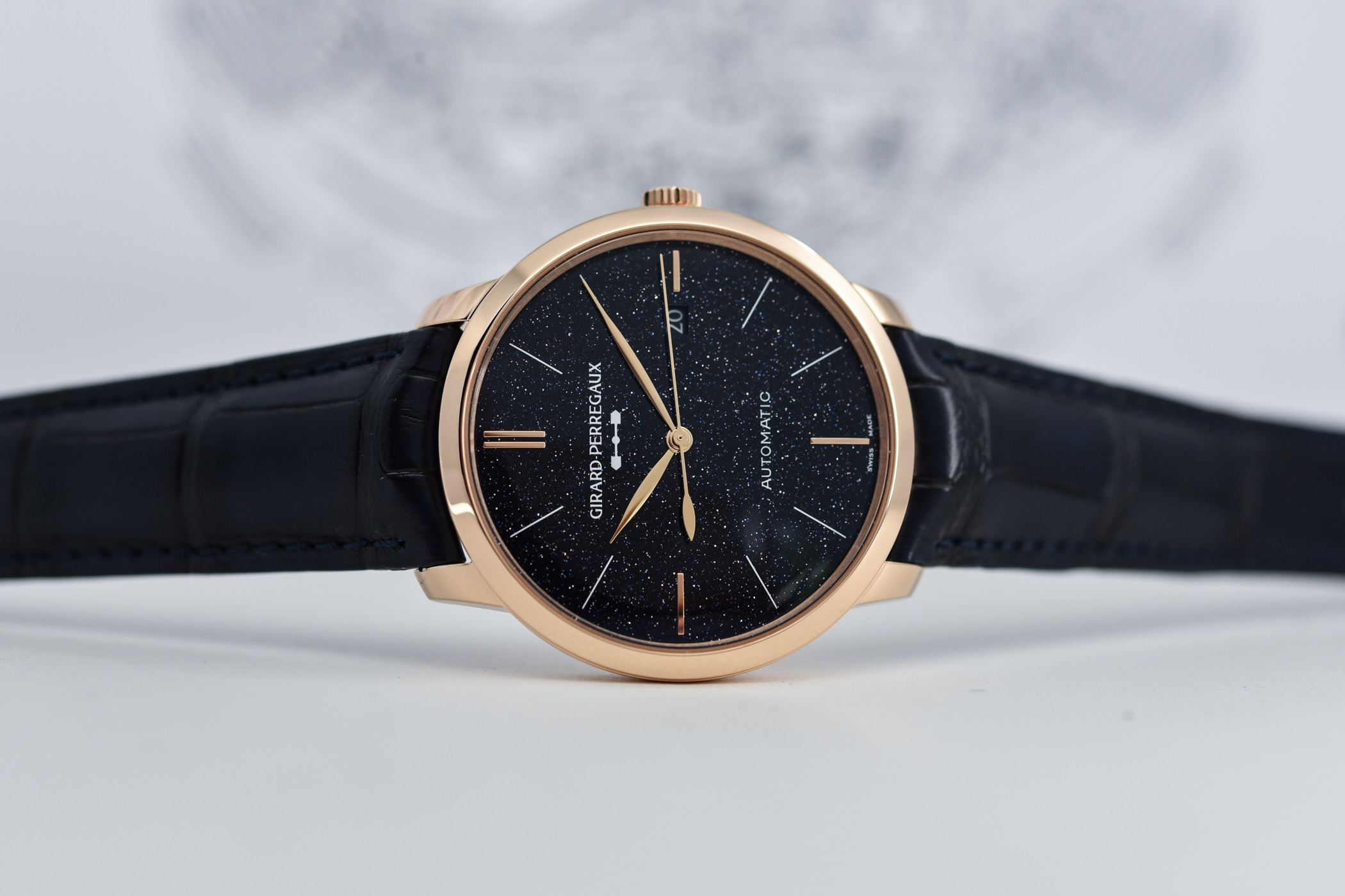
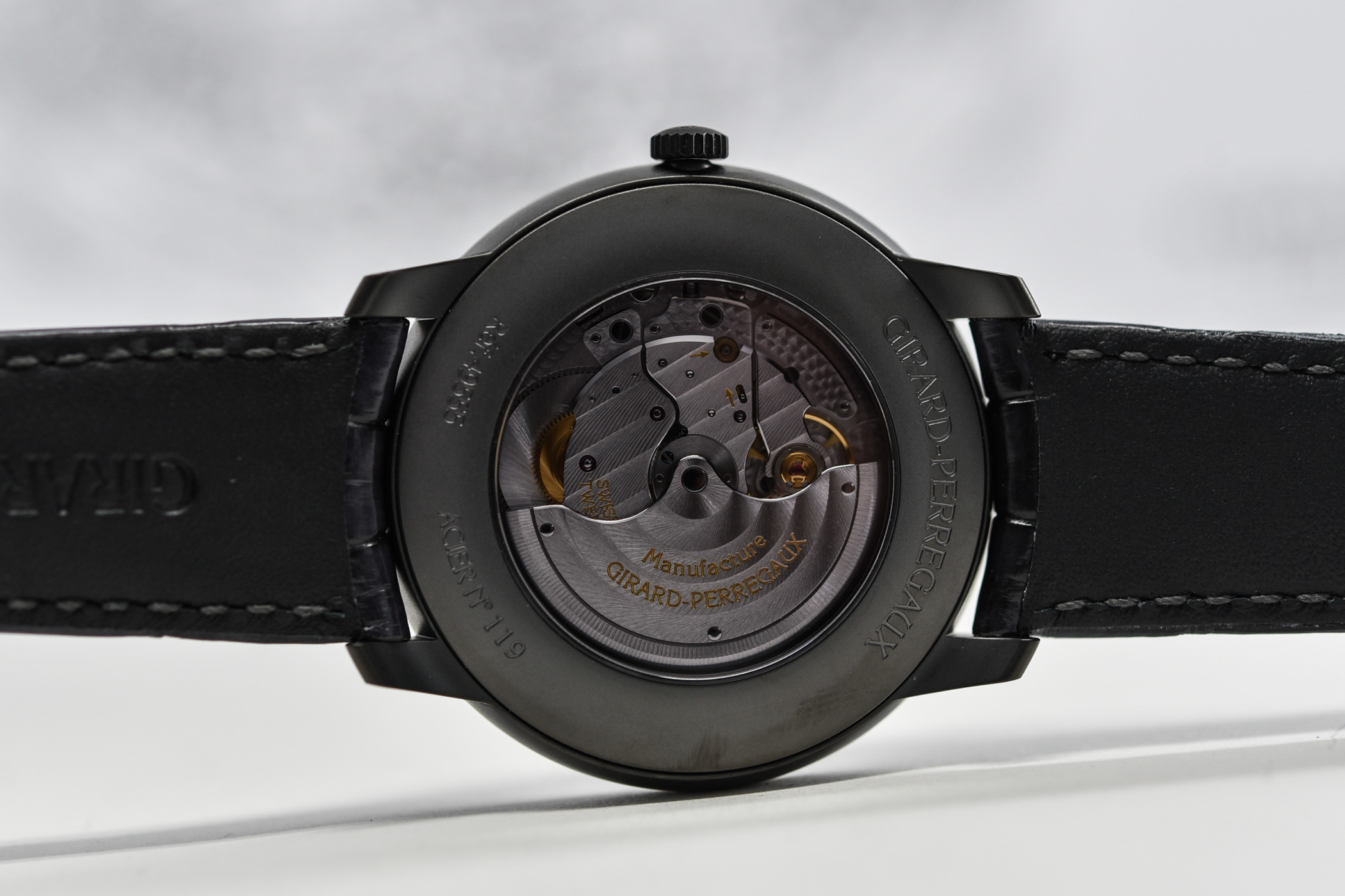
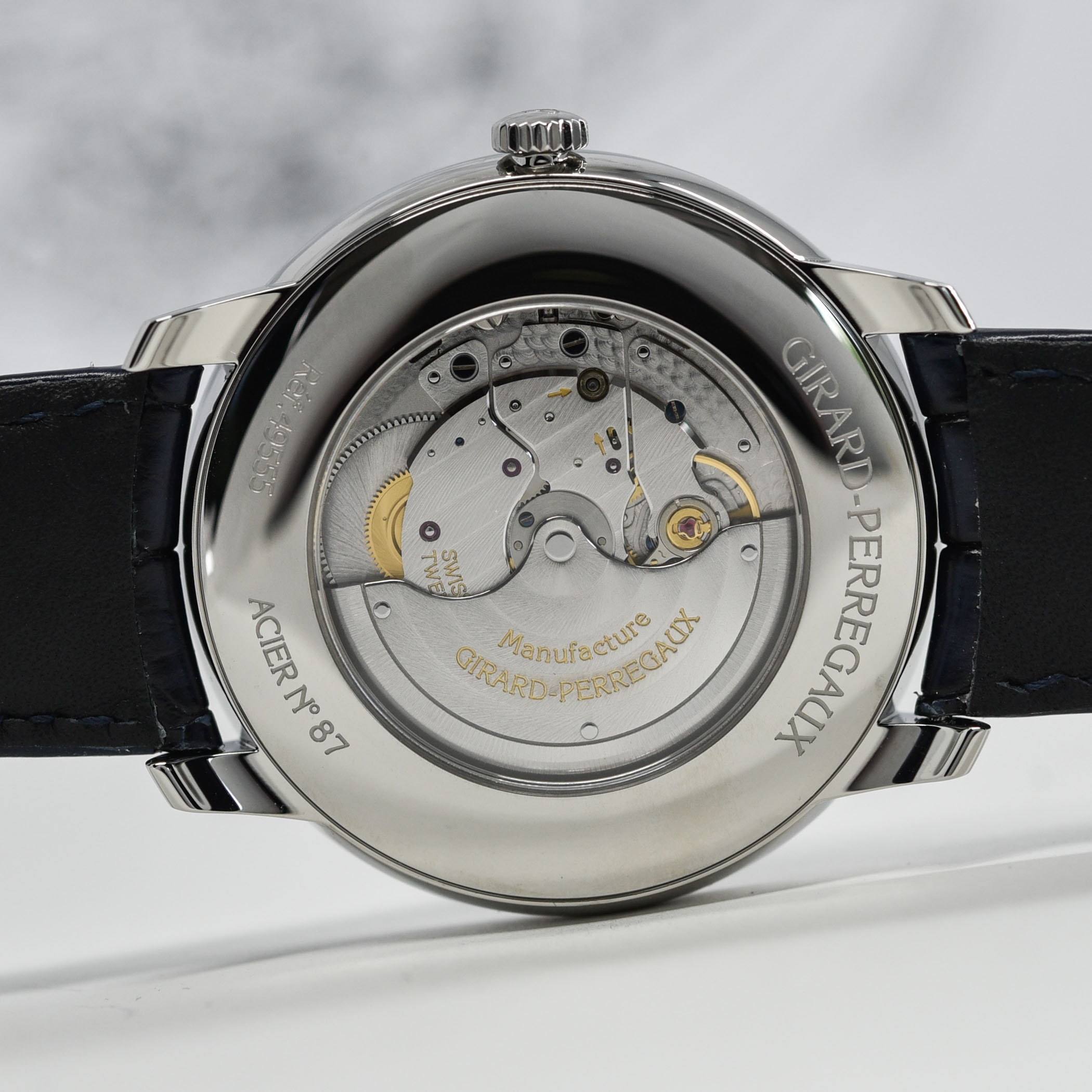
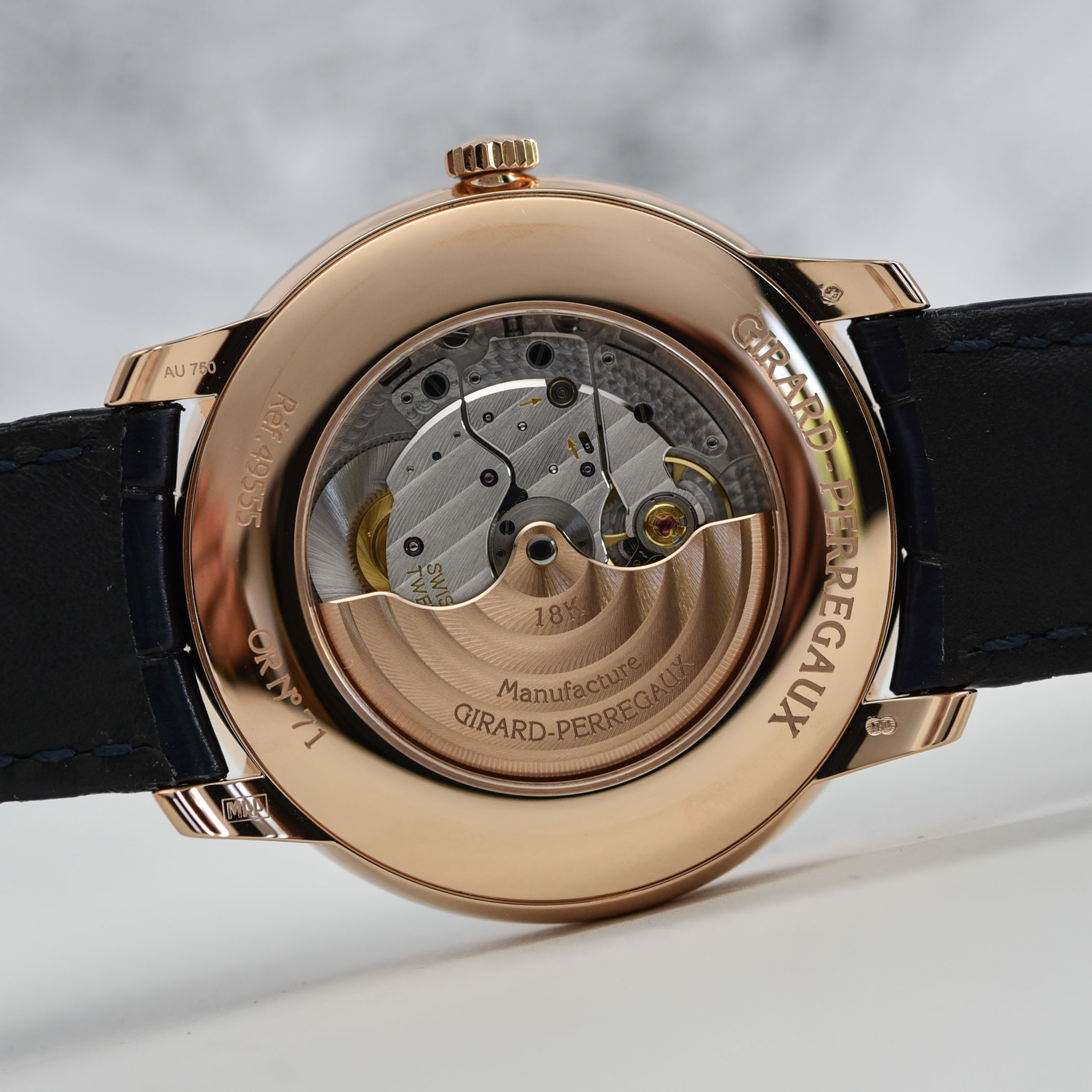



3 responses
Overpriced…Nothing special.
Overpriced indeed. But on the plus side, a return to form for GP after their recent disastrous Quasar Azure. At 2/3 rds of the price quoted in the article this would be an interesting and competitive offering. Let’s hear it from GP’s marketing strategists!
I dont think these watches are overpriced if you look at comparable offerings from GP’s competition. Quasar Azure was never a commercial piece. However, as a one off (small number edition) masterpiece, it is pretty spectacular and shows GP’s watchmaking chops.